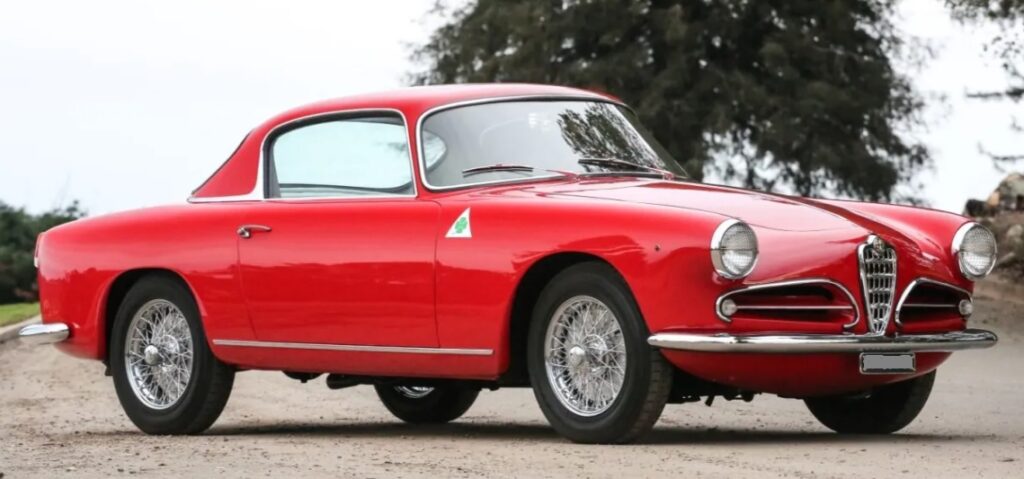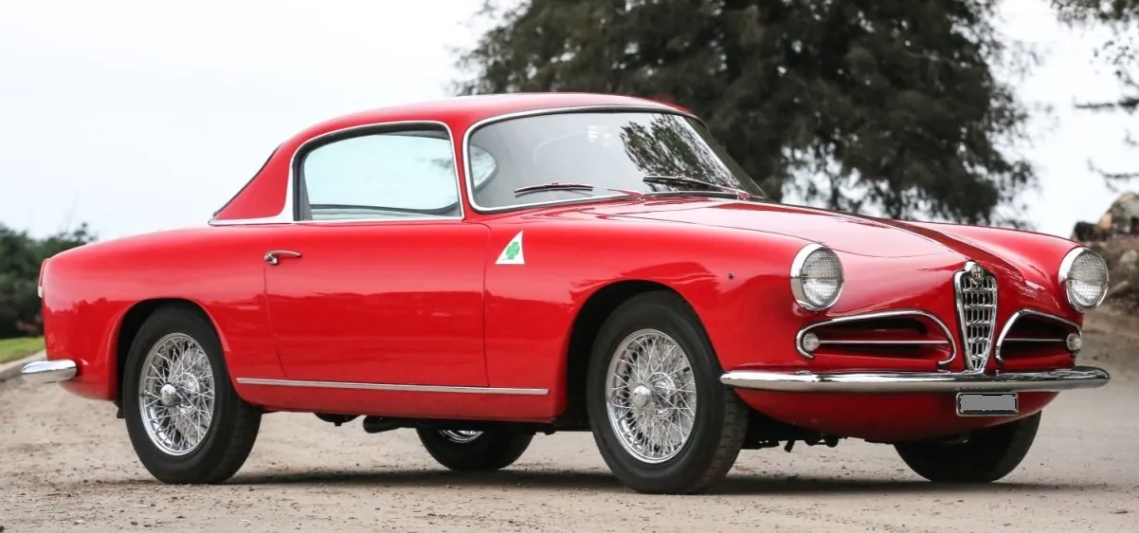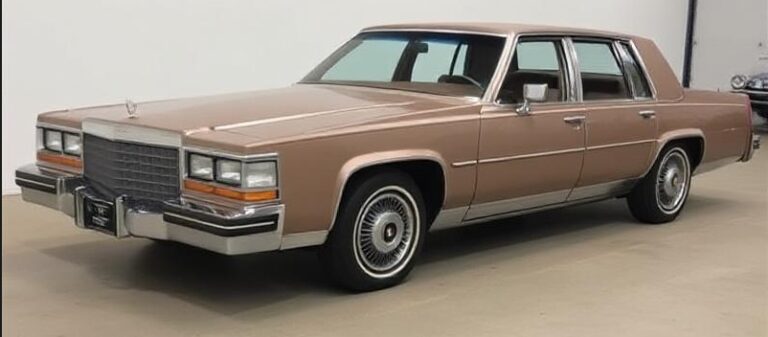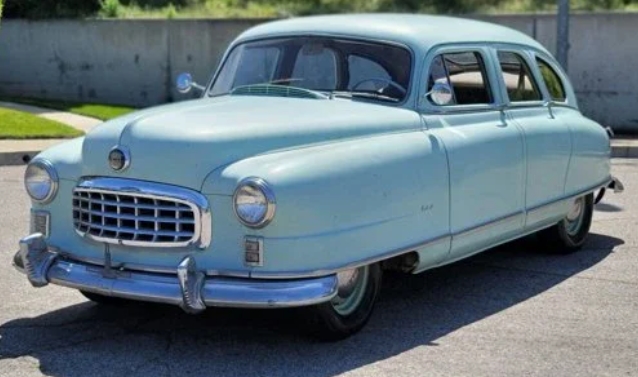The Family Car That Wins Races: The Enduring Evolution of the Alfa Romeo 1900
In the smouldering aftermath of World War II, Italy was a nation rebuilding itself, not just in bricks and mortar, but in spirit and identity. For Alfa Romeo, a marque synonymous with pre-war Grand Prix dominance and opulent, coachbuilt machines for the aristocracy, the path forward was uncertain. The old world of bespoke automotive artistry was gone. To survive, Alfa Romeo had to reinvent itself. The result of this crucible of necessity and engineering genius was not merely a new car, but a new philosophy: the Alfa Romeo 1900. Produced from 1950 to 1959, the 1900 was a revolutionary vehicle that single-handedly redefined the company, pioneered the sports sedan genre, and laid the groundwork for every great Alfa that followed. Its story is one of innovation, dual identity, and breathtaking Italian style.
A New Philosophy: The 1900 Berlina (1950-1954)
Before the 1900, Alfa Romeos were built in the traditional manner: a robust rolling chassis, complete with engine and drivetrain, was delivered to a carrozzeria (coachbuilder) like Touring or Pinin Farina to be bodied. This was a costly, time-consuming process unsuited for the new economic realities. The visionary engineer Orazio Satta Puliga, alongside his team, championed a radical new approach for Alfa Romeo: a car with a unitary construction, or monocoque. This meant the body and chassis were a single, integrated structure, a technique that was stronger, lighter, and crucially, suitable for a modern assembly line. The 1900 would be the first Alfa Romeo built entirely in-house on a production line, democratizing the legendary brand for a new generation of enthusiast drivers.
Unveiled at the 1950 Paris Motor Show, the 1900 Berlina (sedan) was a vision of understated, modern elegance. Its clean, three-box design was purposeful and free of pre-war flamboyance. But beneath this sensible exterior beat the heart of a true Alfa. The engine was a brand new 1,884 cc inline-four, which, while smaller than its pre-war six- and eight-cylinder ancestors, was a technical marvel. Designed by the brilliant Giuseppe Busso, it featured a light alloy cylinder head, dual overhead camshafts (a signature Alfa trait), and hemispherical combustion chambers. In its initial guise, fed by a single downdraft carburetor, it produced a healthy 90 horsepower, enough to propel the family sedan to a top speed of over 150 km/h (93 mph).
This performance, combined with its sophisticated independent front suspension and a well-located live rear axle, gave the 1900 a level of handling and agility unheard of in a saloon car of its day. Alfa Romeo leaned into this duality with a marketing slogan that would become legendary: “La macchina di famiglia che vince le corse” – “The family car that wins races.” It was no idle boast. Privateers immediately began campaigning the 1900 Berlina in demanding events like the Targa Florio and Mille Miglia, proving that practicality and performance were no longer mutually exclusive.
The Sprint and the Carrozzerie: A Bridge to the Past (1951-1954)
While Alfa Romeo had embraced modern production for its Berlina, it wisely maintained its relationship with Italy’s famed coachbuilders. The company began offering a shortened wheelbase version of the 1900 platform, designated the 1900C (Corto, or short), as a blank canvas for the country’s finest automotive artisans.
The most famous and successful of these collaborations was the 1900C Sprint, bodied by Carrozzeria Touring of Milan. Unveiled in 1951, this two-door coupé was a masterpiece of post-war design. Using their patented Superleggera (superlight) construction method—a framework of thin steel tubes covered by a skin of hand-beaten aluminum—Touring created a shape that was both achingly beautiful and aerodynamically efficient. The lithe, perfectly proportioned body was complemented by a tuned version of the 1.9-litre engine, now featuring twin carburetors and producing 100 horsepower. The Sprint was a genuine grand tourer, capable of crossing continents in comfort and style, while also being a formidable competitor on the racetrack.
While Touring’s Sprint was the most prolific, the 1900C chassis inspired a breathtaking variety of custom bodies. Ghia, Pinin Farina, Zagato, Bertone, and Vignale all produced their own interpretations, ranging from elegant convertibles to avant-garde concepts. These coachbuilt specials represented the last flourish of the old way of doing things, creating a fleet of unique and highly desirable cars built upon Alfa’s first modern platform.
Mid-Life Evolution: The Super and the TI (1954-1959)
By 1954, the 1900 was due for an update to keep it competitive. Alfa Romeo introduced a comprehensive second series, rebranding the core model line.
The standard saloon was now the 1900 Super Berlina. The most significant change was under the bonnet, where the engine was bored out to 1,975 cc. This newly enlarged engine, now equipped with a larger carburetor, produced between 90 and 100 horsepower, offering improved torque and drivability. Visually, the Super was distinguished by minor stylistic changes, including small chrome “whiskers” flanking the central grille, and updated interior appointments.
For those who demanded more from their family car, Alfa introduced the 1900 TI (Turismo Internazionale). This was the definitive performance version of the Berlina. It used the same 1,975 cc block but featured a higher compression ratio and, most importantly, two double-choke Solex carburetors. Power jumped to 100 hp, making it a true “Q-car”—a discreet sedan with the soul of a sports car. The TI was an immediate success in the burgeoning touring car race scene, a category it was practically designed to dominate. It fully embodied the promise of its famous slogan.
A further, more potent evolution was the 1900 T.I. Super of 1955. This model took the TI’s formula and pushed it further, boasting 115 horsepower thanks to more aggressive tuning. It was often equipped with a floor-mounted shifter (as opposed to the standard column shift) and larger drum brakes, making it the ultimate expression of the racing Berlina.
The Apex Predator: The 1900C Super Sprint (CSS)
Just as the Berlina evolved, so too did its exotic coupé sibling. The second series of the short-wheelbase chassis gave birth to the 1900C Super Sprint (often abbreviated to CSS). This was the pinnacle of the 1900 family. It combined the lighter, more agile Corto chassis with the potent 1,975 cc engine from the T.I. Super, tuned to produce a formidable 115 horsepower.
Once again, Carrozzeria Touring was the primary coachbuilder, creating a subtly updated version of their classic Sprint design. These later cars often featured a 5-speed manual gearbox, offering an even more engaging driving experience and better high-speed cruising ability. The 1900 CSS was a world-class GT car, competing with the likes of Lancia and Ferrari on both the road and track.
It was in this CSS guise that Carrozzeria Zagato also produced its most famous 1900s. Known for their uncompromising focus on lightweight performance, Zagato created aggressively styled, aerodynamic coupés that were even lighter than Touring’s Superleggera models. Often featuring their iconic “double bubble” roof to provide headroom for helmeted drivers, the 1900 SSZ was a pure, stripped-down racing machine, and remains one of the most sought-after and valuable variants of the 1900 today.
The Unlikely Cousins: Matta and Disco Volante
The 1900 platform’s versatility extended beyond sedans and coupés into two of Alfa Romeo’s most unusual creations. The Alfa Romeo 1900 M, better known as the “Matta” (or “Mad” car), was a rugged off-road vehicle developed for the Italian military. Looking much like a Willys Jeep, the AR51 (for military use) and AR52 (for civilian use) were powered by a de-tuned version of the 1900’s twin-cam engine, proving the motor’s incredible durability.
At the opposite end of the spectrum was the C52, the breathtaking “Disco Volante” (Flying Saucer). This was not a production model but a series of experimental racing spiders and coupés built in 1952. While they used a unique tubular spaceframe chassis, their engine, gearbox, and suspension were all derived from the 1900. With its stunning, wind-tunnel-honed bodywork by Touring, the Disco Volante was a vision of the future and remains one of the most beautiful automotive designs in history.
.
Many car aficionados have multiple hobbies, like boating as well as auto stuff. Those who don’t already own a boat (and even some that do), may have thought about building their own boats. It’s really not as hard as you’d think. Just take a look at these easy boat building plans!

.
The Legacy of a Revolution
When production of the Alfa Romeo 1900 ceased in 1959, over 21,000 units had been built. It was a commercial success that had secured Alfa Romeo’s post-war survival. But its true legacy is far greater. The 1900 created the blueprint for the modern Alfa Romeo: a car with a spirited twin-cam engine, exceptional handling, and a practical body. It proved that a sedan could stir the soul and that a family could own a car with a genuine racing pedigree. The lineage is direct and undeniable; the celebrated Giulietta, the legendary Giulia, the Alfetta, and even today’s Giulia sedan all owe their conceptual existence to the pioneering vision of the 1900. It was more than just a car; it was the birth of an icon and the machine that truly put the race in the family car.








